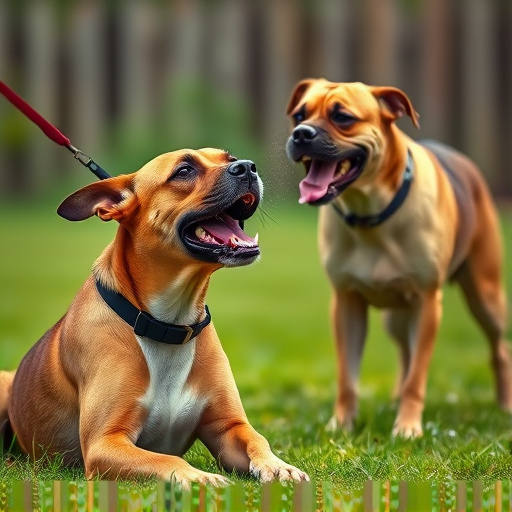Animal control sprays offer safe and effective solutions for managing wildlife or feral animals, with various types catering to different scenarios, from chemical repellents to motion-activated devices. Their use is regulated in many regions to balance public safety and animal welfare, with specific rules varying by location. In emergencies, these sprays provide crucial deterrents for distressed animals, requiring proper protective gear and emergency care procedures like removing contaminated clothing and rinsing eyes. Animal control spray should only be deployed responsibly after adequate training and maintenance, ensuring effective intervention without causing permanent harm.
Animal control sprays have become a common tool for managing unwanted wildlife, but their legal status varies widely across regions. This article delves into the world of animal control sprays, exploring different types, their applications, and the legal frameworks governing their use. We discuss safety measures and emergency care for animals affected by these sprays, emphasizing responsible usage through best practices. Understanding these aspects is crucial for effective and safe intervention, especially when dealing with distressed animals requiring emergency care.
- Understanding Animal Control Sprays: Types and Applications
- Legal Frameworks Governing the Use of Animal Spray in Different Regions
- Safety Measures and Emergency Care When Handling Maced Animals
- Responsible Usage: Best Practices for Effective and Safe Intervention
Understanding Animal Control Sprays: Types and Applications
Animal control sprays are specialized products designed for safe and effective animal deterrence, offering a non-lethal approach to managing problematic wildlife or feral animals. These sprays come in various forms, each with unique active ingredients and applications. From pepper spray to ultrasonic devices, these tools cater to different scenarios, ensuring the well-being of both humans and animals involved.
The types range from conventional chemical repellents, which use strong odors or tastes to discourage animals, to more innovative options like motion-activated sprinklers and noise makers. In emergency situations involving maced animals, these sprays can provide crucial momentary deterrents, allowing for safe removal or escape. For instance, pepper spray is effective against aggressive dogs, while ultrasonic devices emit high-frequency sounds that repel smaller creatures without causing harm.
Legal Frameworks Governing the Use of Animal Spray in Different Regions
In many regions, the legal frameworks governing the use of animal spray are designed to balance public safety with the welfare of animals. The specific regulations can vary widely depending on the country and even within states or provinces. For instance, in some areas, animal spray is strictly reserved for emergency care for maced animals, such as when a pet becomes aggressively behaved due to fear, pain, or illness. These regions often require proper training and certification for individuals handling and applying the spray to ensure its responsible use.
Other jurisdictions allow for broader application, particularly in managing feral or stray animal populations. Here, regulations typically include restrictions on the types of spray allowed, the frequency of use, and areas where it can be deployed. Environmental impact studies might also be required to assess the safety of these chemicals for both ecosystems and human communities. Additionally, there are strict guidelines on disposal methods to prevent contamination and harm to wildlife and water sources.
Safety Measures and Emergency Care When Handling Maced Animals
When handling animals that have been sprayed with pepper spray, or any similar animal control agent, safety measures are paramount. It’s crucial to wear protective gear, including gloves, eye protection, and a respirator, to avoid direct contact with the spray and its potentially harmful irritants. In case of accidental exposure, emergency care should be administered immediately. This includes removing contaminated clothing, rinsing eyes thoroughly for at least 15 minutes, and seeking medical attention if irritation or difficulty breathing persists.
In situations where an animal exhibits severe symptoms after being sprayed, such as excessive panting, lethargy, or aggression, it’s essential to contact local animal control services or a veterinarian promptly. Emergency care for maced animals should focus on stabilizing their vital signs and providing supportive treatment until professional help arrives. This might involve moving the animal to a safe, enclosed space, keeping them calm, and monitoring their condition closely.
Responsible Usage: Best Practices for Effective and Safe Intervention
Animal control spray, also known as pepper spray for animals, is a powerful tool designed for emergency care and maced animal intervention. Its responsible usage involves adhering to best practices that prioritize safety and effectiveness. When used appropriately, this non-lethal spray can quickly immobilize an animal, allowing for safe capture and removal without causing permanent harm.
Best practices include ensuring proper training in the use of animal control spray, as it requires a deep understanding of animal behavior and safety protocols. Users should always maintain a safe distance, follow manufacturer instructions, and only deploy the spray when necessary. Additionally, regular maintenance and calibration of equipment ensure optimal performance during emergencies, making it crucial for effective animal control strategies.
Animal control sprays, while legal in many regions, come with a responsibility to ensure safe and effective usage. Understanding the types of sprays, their applications, and the legal frameworks governing their use is crucial. Adhering to safety measures and best practices not only protects individuals from harm but also provides emergency care for maced animals. By embracing responsible usage, we can navigate these tools effectively, fostering a safer and more harmonious coexistence with our animal neighbors.
